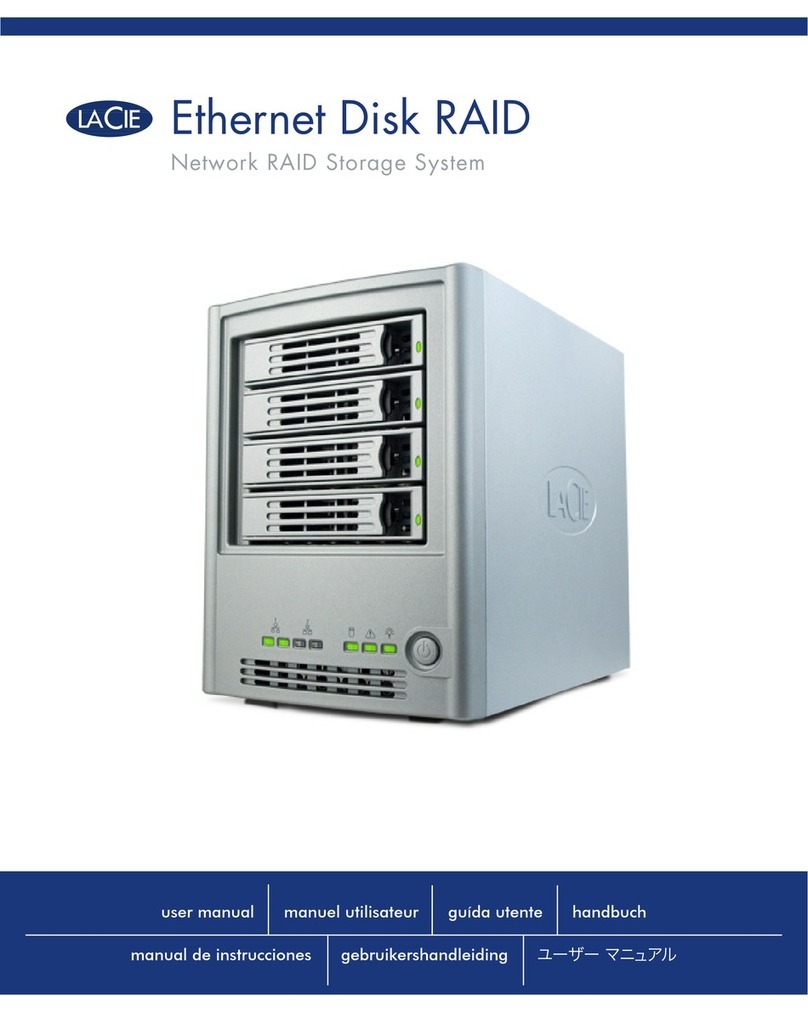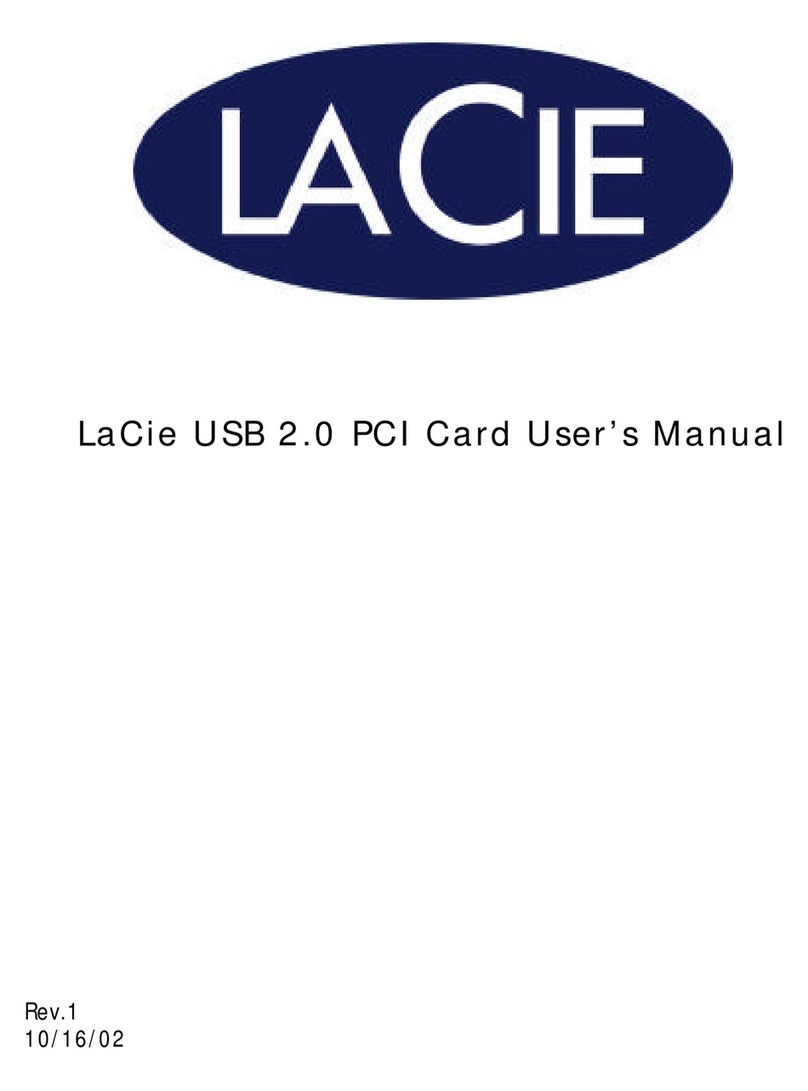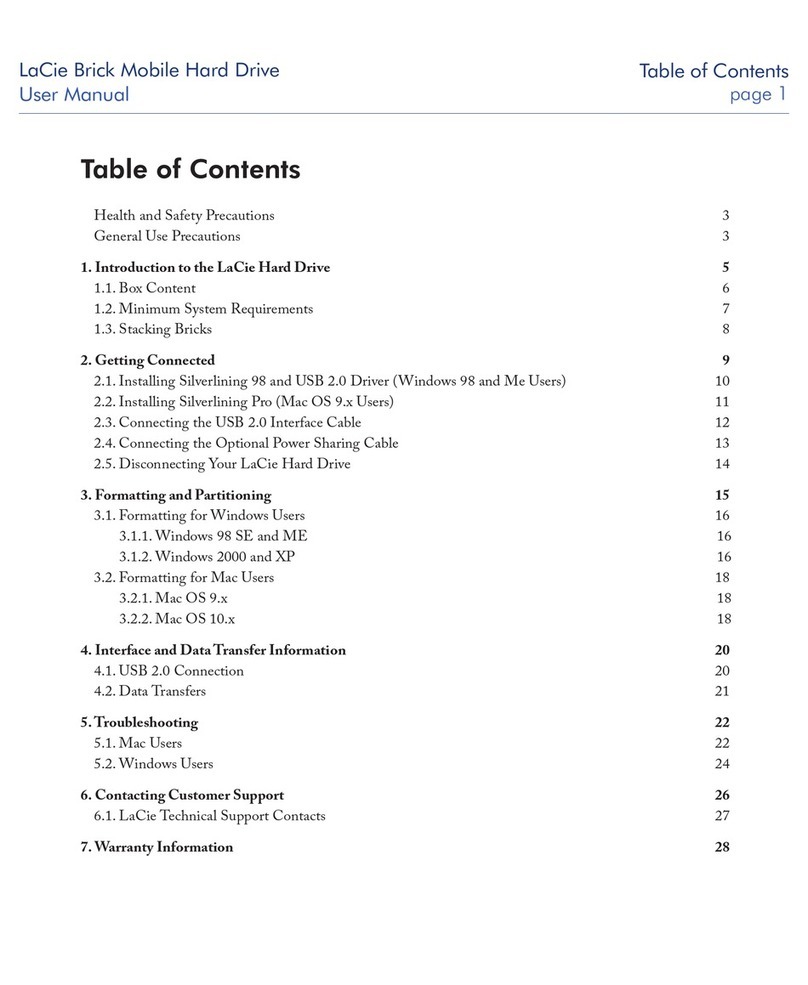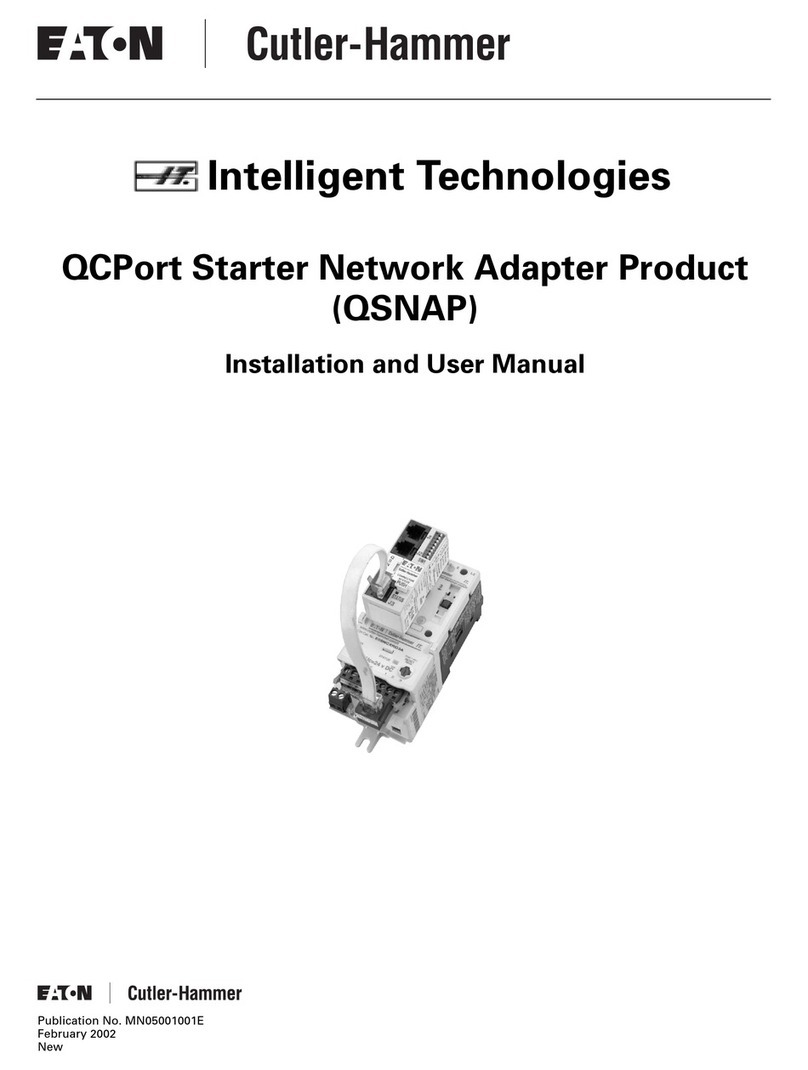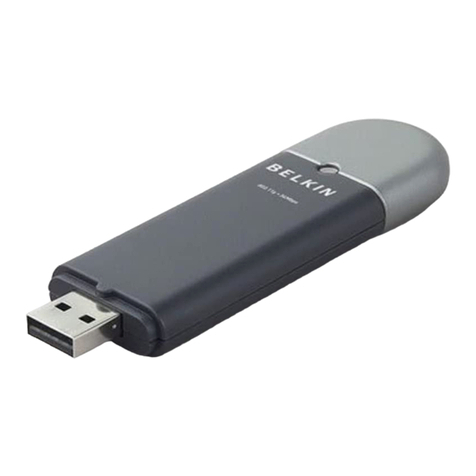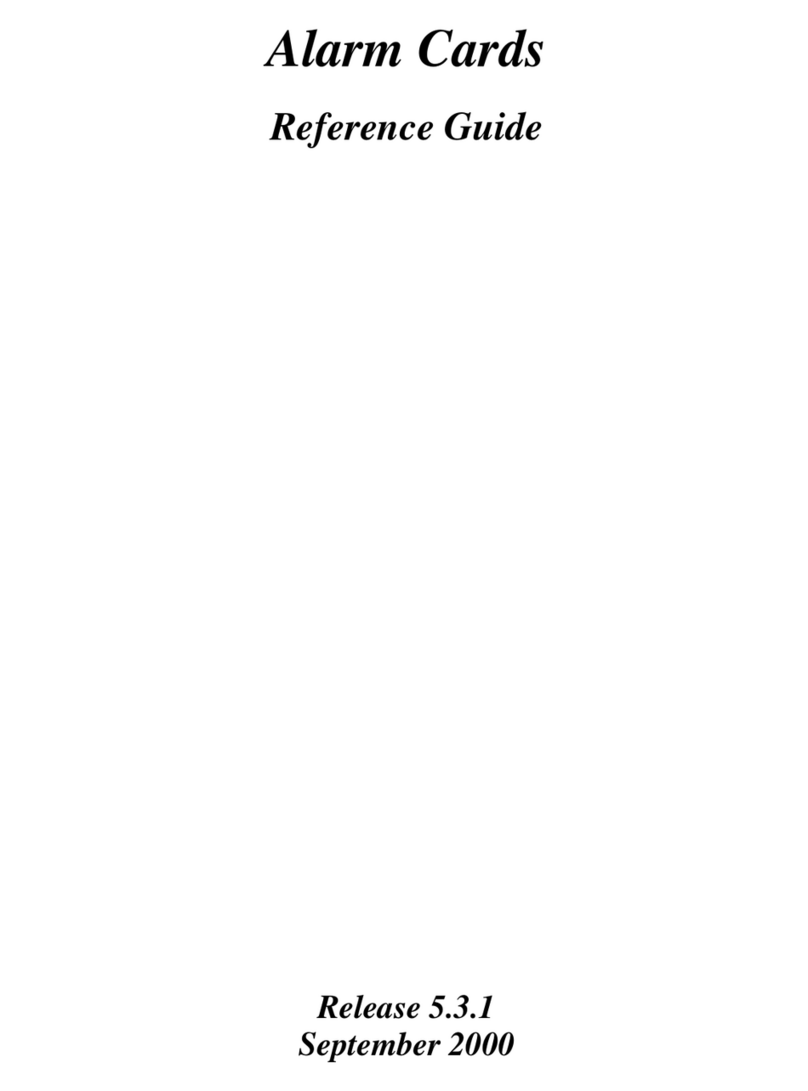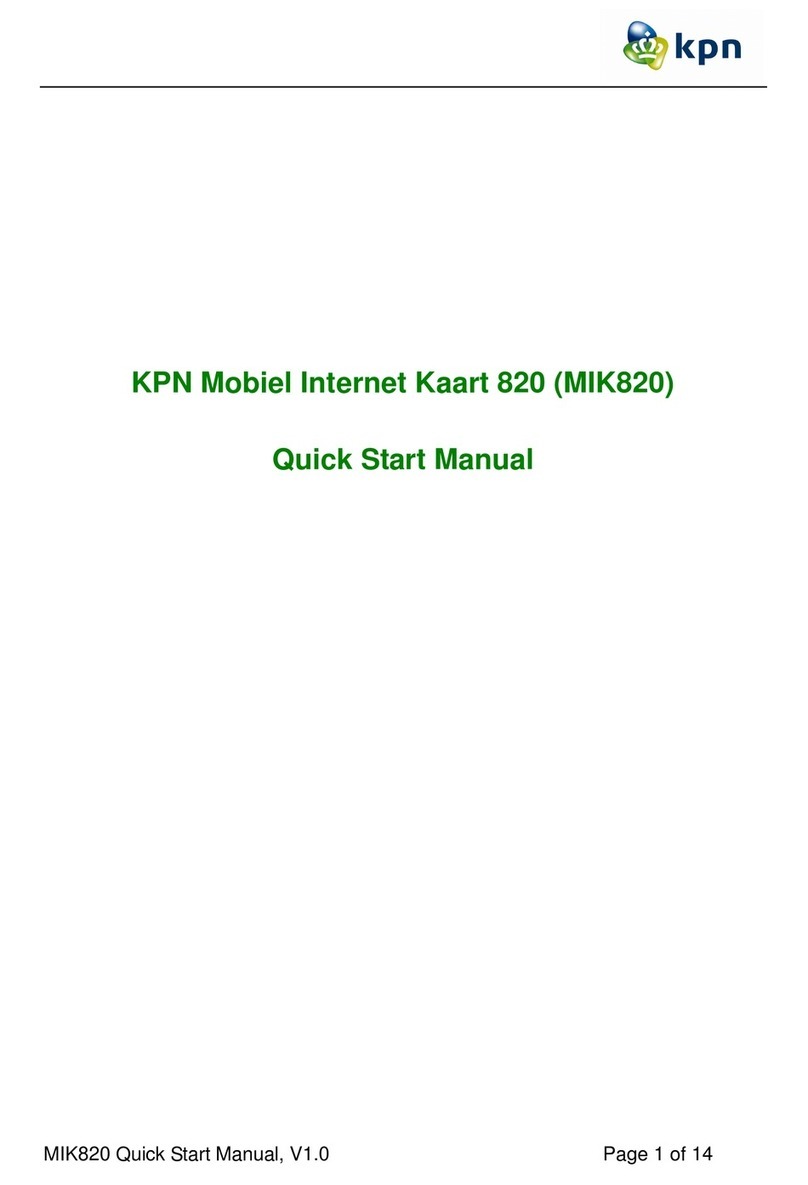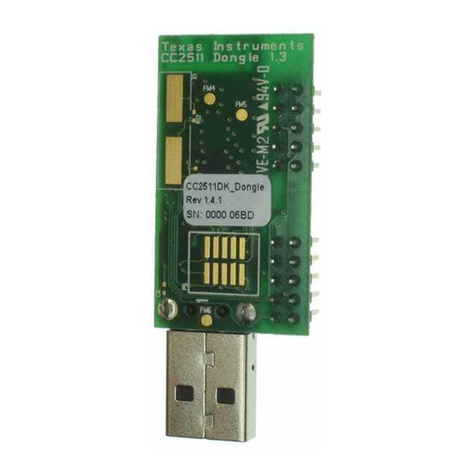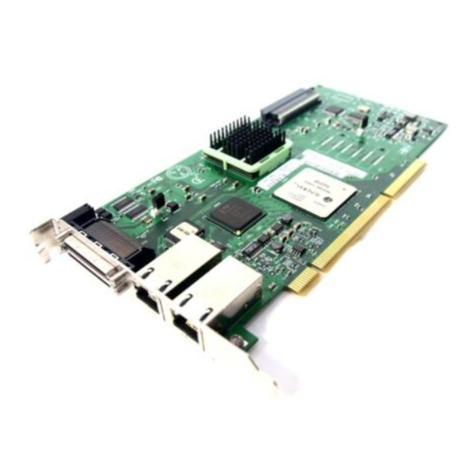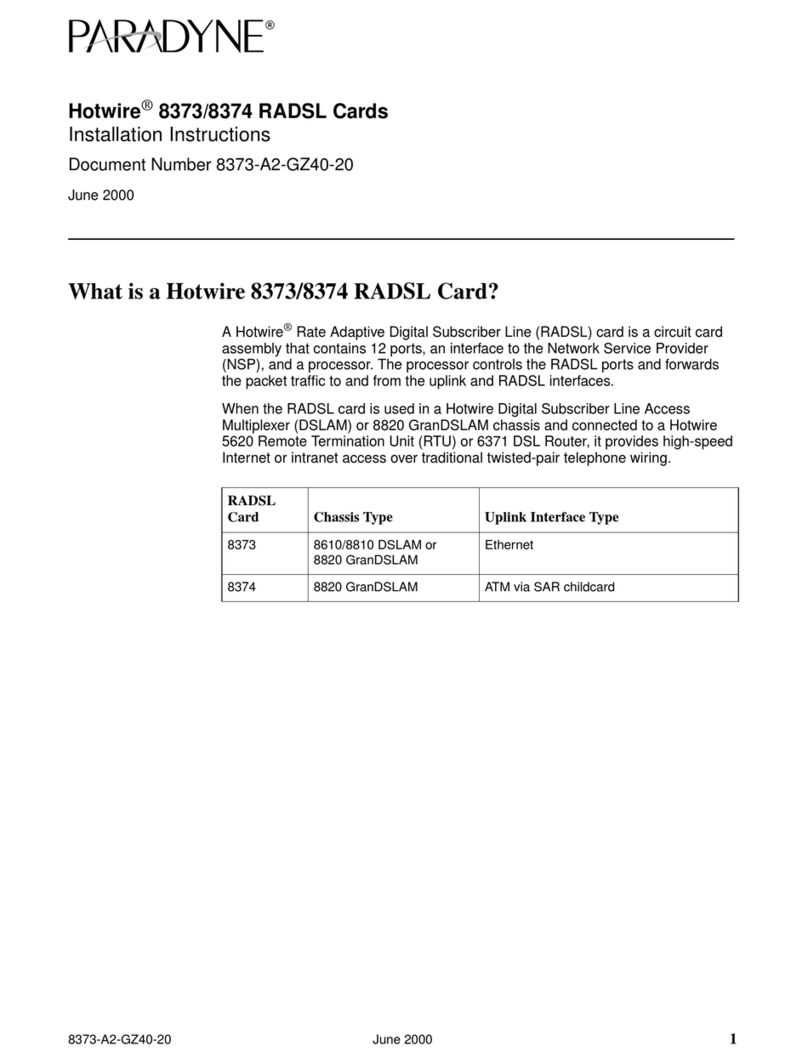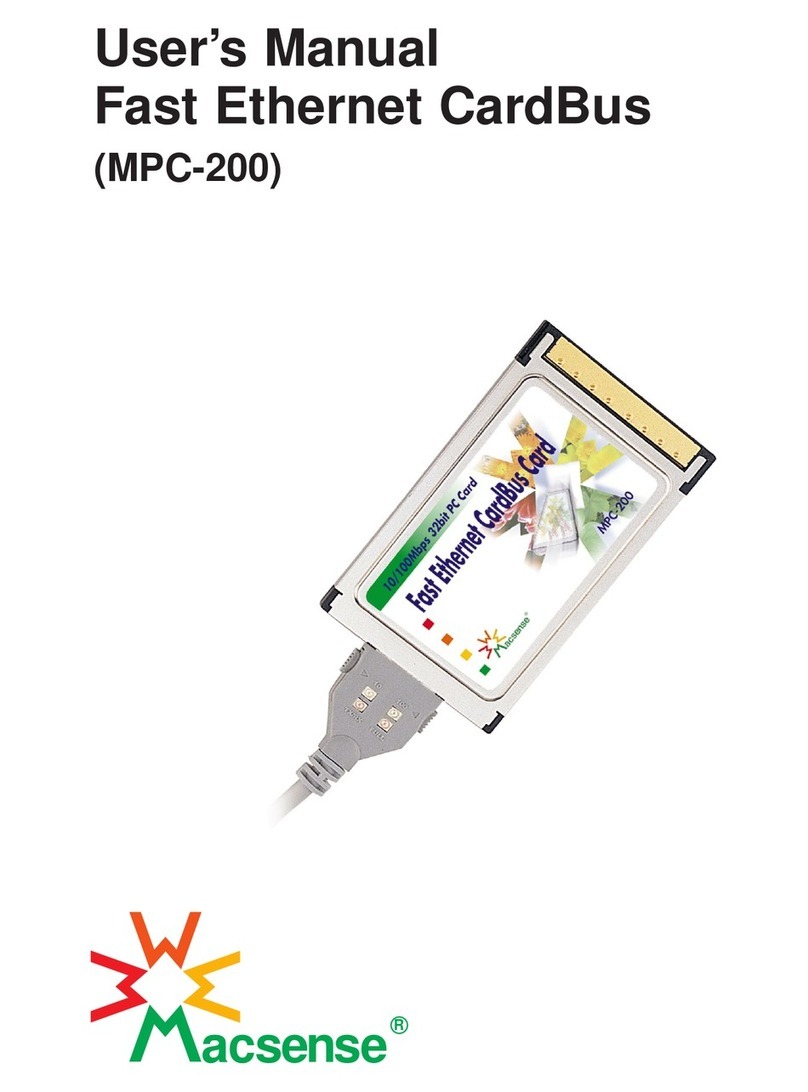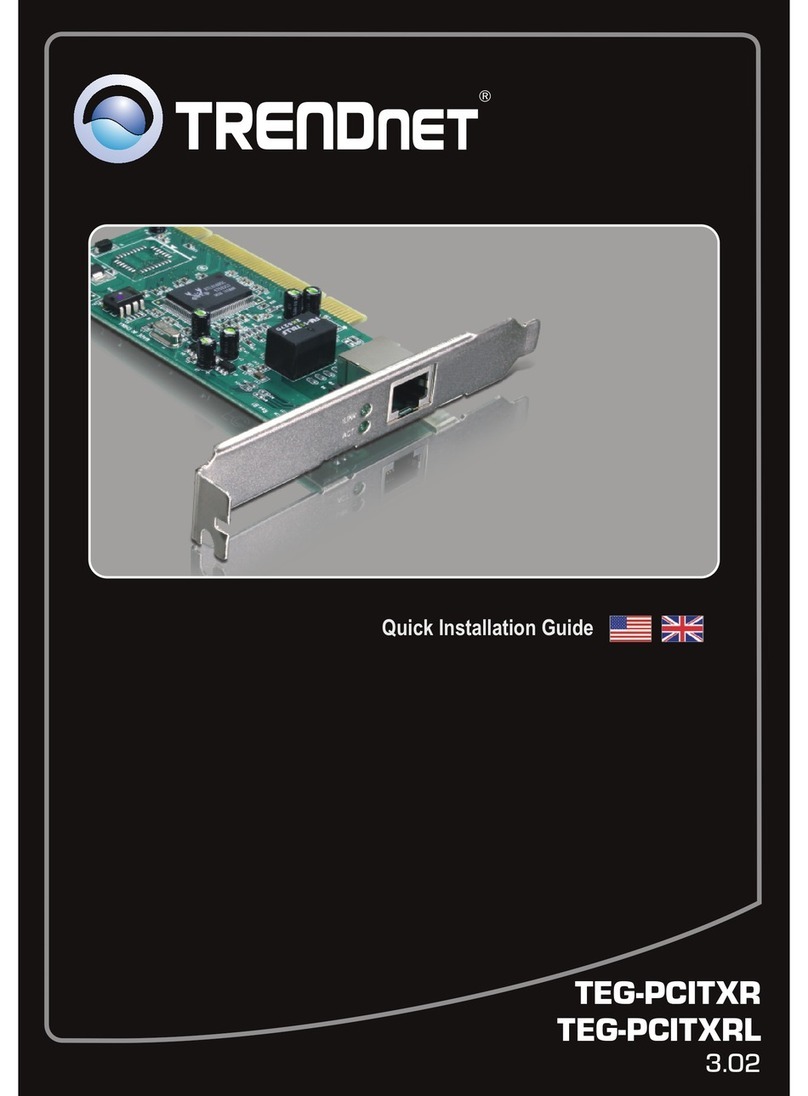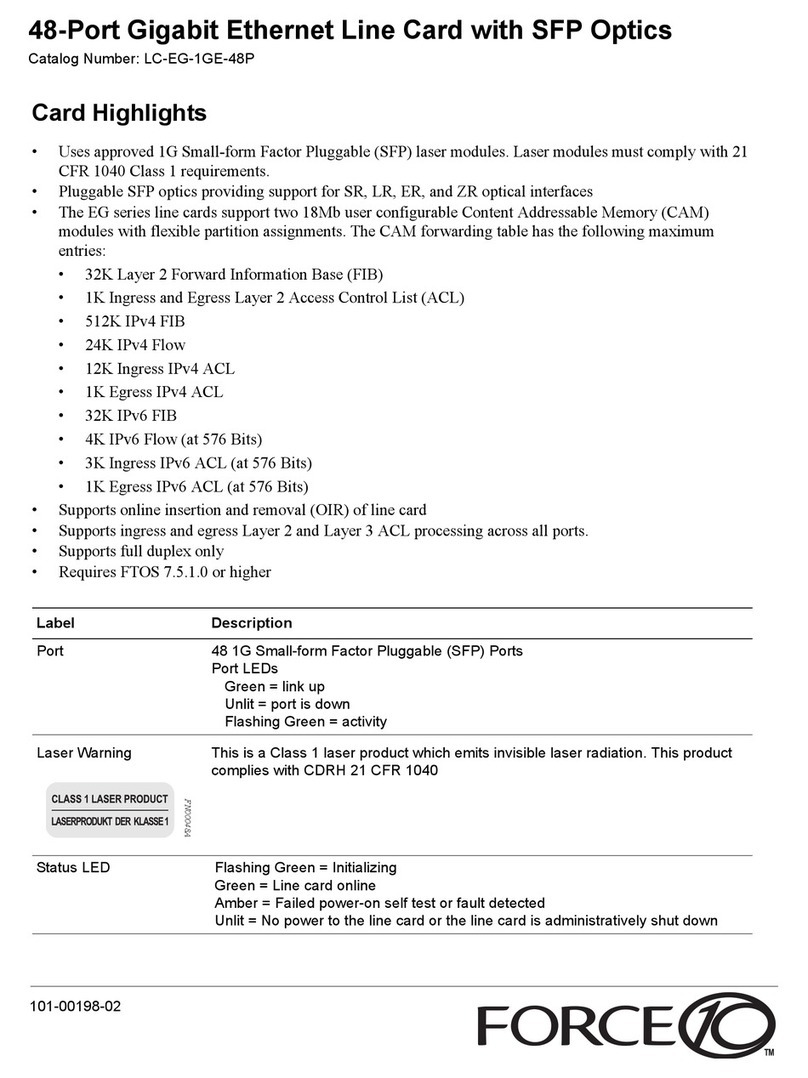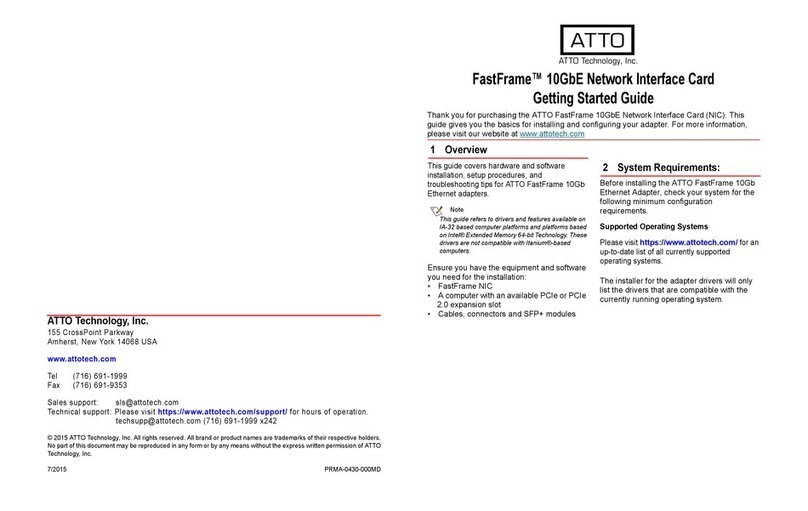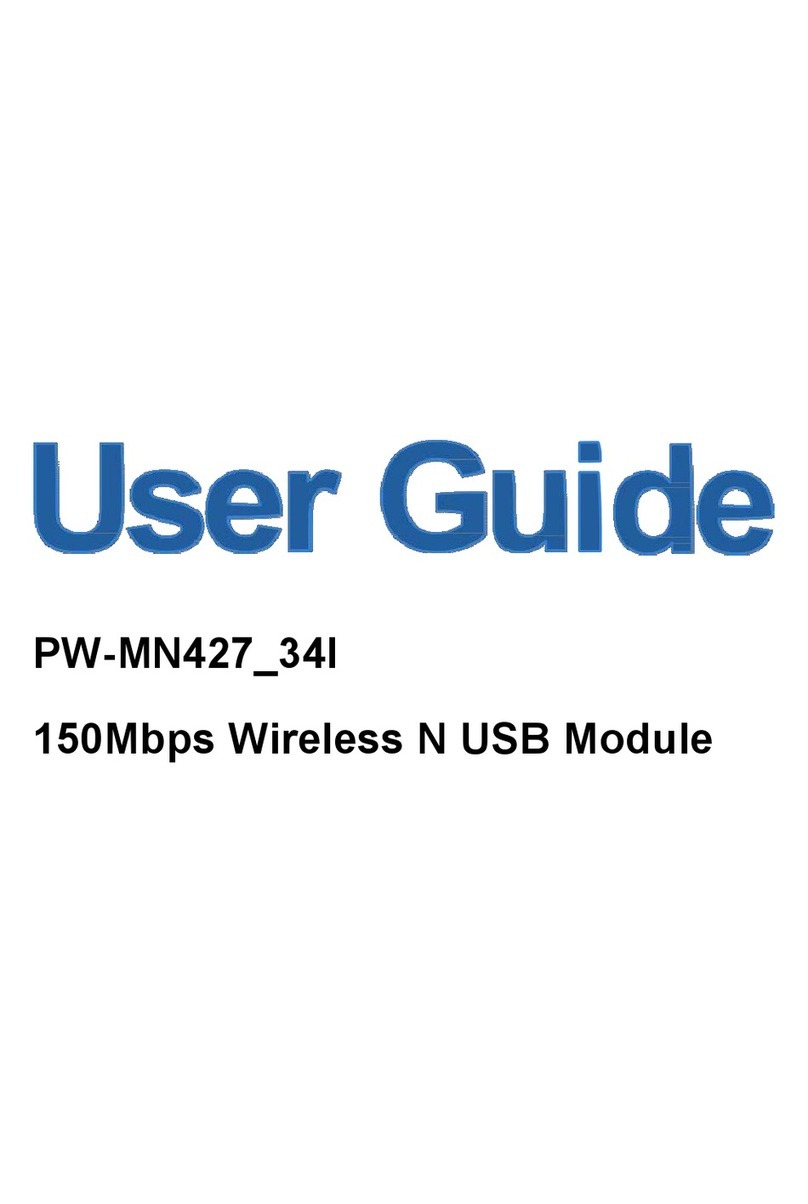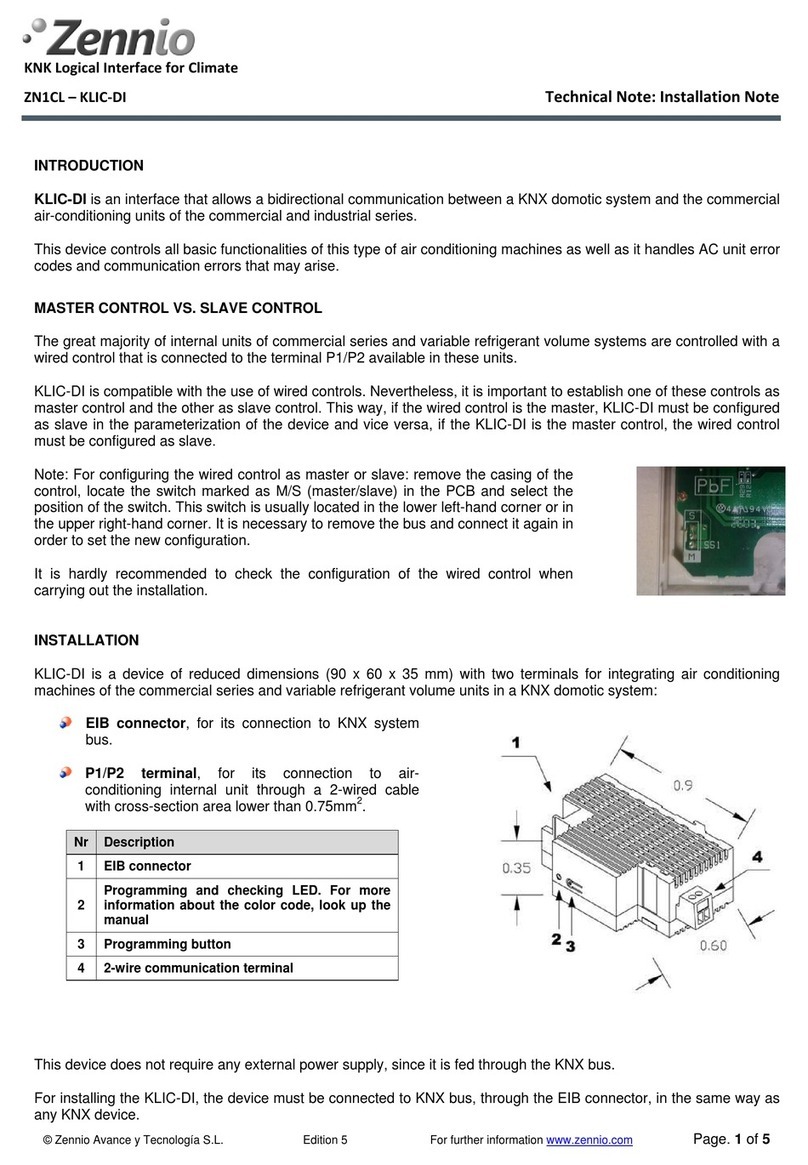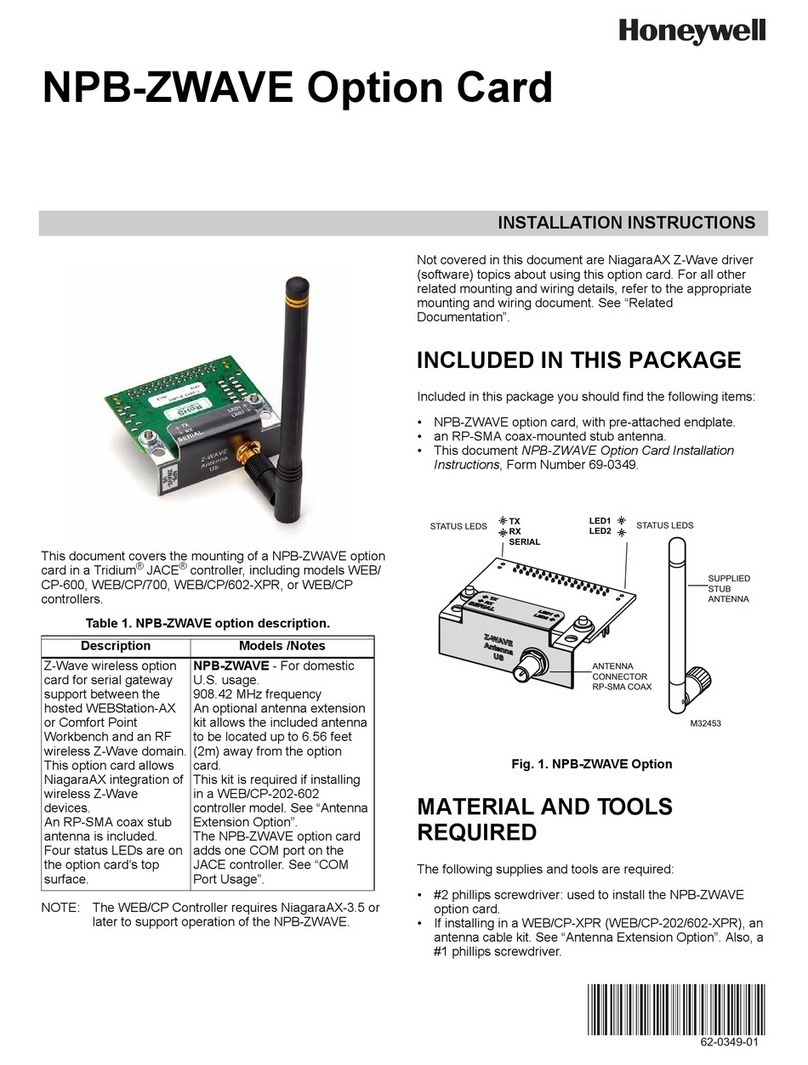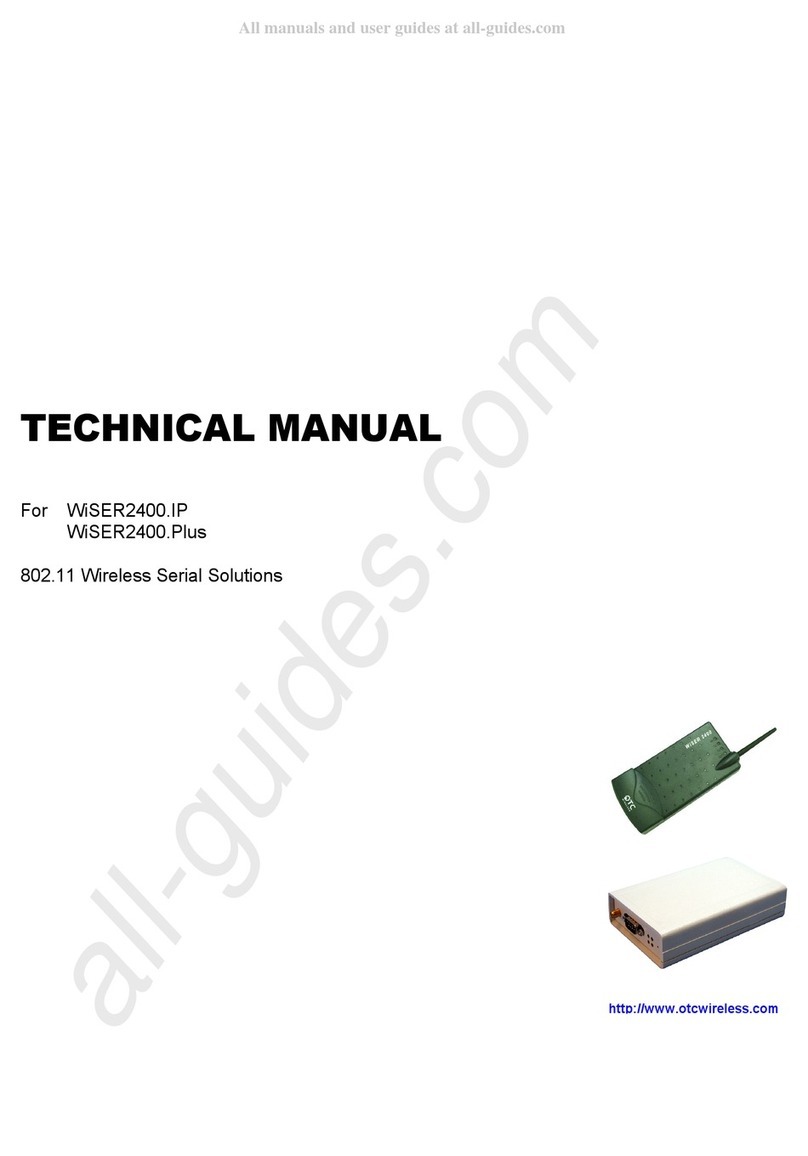LaCie 130822 - FireWire 400 ANF 800 USB 2.0 PCI Card... User manual

LaCie USB 2.0 / FireWire 400 & 800 PCI Card • DESIGN BY SISMO Table of Contents
User Manual page 1
Table of Contents
1.Introduction.............................................................................................................. 4
2.Your LaCie USB 2.0 / FireWire 400 & 800 PCI Card ................................................. 5
1.1. Minimum System Requirements ..................................................................................................... 5
2.1. Package Content ......................................................................................................................... 6
2.2. View of the Card.......................................................................................................................... 6
3.Installing Your LaCie PCI Card ................................................................................. 7
3.1. Electrostatic Discharge (ESD)......................................................................................................... 7
3.2. Inserting Your LaCie PCI Card....................................................................................................... 8
3.3. Driver Installation ......................................................................................................................... 9
4.USB 2.0 Questions & Answers ................................................................................ 10
5.FireWire Questions & Answers ............................................................................... 11
6.Contacting Customer Support................................................................................. 13
6.1. LaCie Technical Support Contacts ............................................................................................... 14
7.Warranty Information............................................................................................. 15

LaCie USB 2.0 / FireWire 400 & 800 PCI Card • DESIGN BY SISMO Foreword
User Manual page 2
Copyrights
Copyright © 2011 LaCie. All rights re-
served. No part of this publication may be
reproduced, stored in a retrieval system, or
transmitted in any form or by any means,
electronic, mechanical, photocopying,
recording or otherwise, without the prior
written consent of LaCie.
Trademarks
Apple, Mac, Macintosh and FireWire are
registered trademarks of Apple Com-
puter, Inc. Sony and iLink are registered
trademarks of Sony Electronics. Microsoft,
Windows 98, Windows 98SE, Windows
Millennium Edition, Windows 2000 and
Windows XP are registered trademarks of
Microsoft Corporation. Other trademarks
mentioned in this manual are the property
of their respective owners.
Changes
The material in this document is for infor-
mation only and subject to change without
notice. While reasonable efforts have been
made in the preparation of this document
to assure its accuracy, LaCie assumes no
liability resulting from errors or omissions
in this document, or from the use of the in-
formation contained herein. LaCie reserves
the right to make changes or revisions in
the product design or the product manual
without reservation and without obligation
to notify any person of such revisions and
changes.
FCC Statement:
Tested to comply with FCC
standards for home or of-
fice use
LaCie PCI Card
(Combo)
NOTE: This equipment has been tested
and found to comply with the limits for a
Class A digital device, pursuant to Part 15
of the FCC Rules. These limits are de-
signed to provide reasonable protection
against harmful interference when the
equipment is operated in a commercial
environment. This equipment generates,
uses, and can radiate radio frequency en-
ergy and, if not installed and used in ac-
cordance with the instruction manual, may
cause harmful interference to radio com-
munications. Operation of this equipment
in a residential area is likely to cause
harmful interference in which case the
user will be required to correct the inter-
ference at his own expense.
NOTE: This equipment has been tested
and found to comply with the limits for
a Class B digital device, pursuant to Part
15 of the FCC Rules. These limits are de-
signed to provide reasonable protection
against harmful interference in a residen-
tial installation. This equipment generates,
uses and can radiate radio frequency en-
ergy and, if not installed and used in ac-
cordance with the instructions, may cause
harmful interference to radio communica-
tions. However, there is no guarantee that
interference will not occur in a particular
installation. If this equipment does cause
harmful interference to radio or television
reception, which can be determined by
turning the equipment off and on, the user
is encouraged to try and correct the inter-
ference by one or more of the following
measures:
✦Reorient or relocate the receiving an-
tenna.
✦Increase the separation between the
equipment and receiver.
✦Connect the equipment into an out-
let on a circuit different from that to
which the receiver is connected.
✦Consult the dealer or an experienced
radio/TV technician for help.
Canada Compliance Statement
This Class A digital apparatus meets all re-
quirements of the Canadian Interference-
Causing Equipment Regulations.
Manufacturer’s Declaration
for CE Certification
We, LaCie, solemnly declare that this
product conforms to the following Euro-
pean standards:
Class B EN60950, EN55022, EN50082-1,
EN61000-3-2
With reference to the following conditions:
2006/95/EC Low Voltage Directive
2004/108/EC EMC Directive
110419 v1.1

LaCie USB 2.0 / FireWire 400 & 800 PCI Card • DESIGN BY SISMO Foreword
User Manual page 3
✦Only qualified persons are authorized
to carry out maintenance on this de-
vice.
✦Read this User Manual carefully, and
follow the correct procedure when
setting up the device.
✦Do not attempt to disassemble or
modify your PCI card. Never insert
any metallic object into the circuitry
to avoid any risk of electrical shock,
fire, short-circuiting or dangerous
emissions. Your PCI card contains no
user-serviceable parts. If it appears to
be malfunctioning, have it inspected
by a qualified LaCie Technical Sup-
port representative.
✦Never expose your device to rain, or
use it near water, or in damp or wet
conditions. Never place objects con-
taining liquids on the PCI card, as
they may spill onto its circuitry. Do-
ing so increases the risk of electrical
shock, short-circuiting, fire or per-
sonal injury.
✦Make sure that the computer and PCI
card are electrically grounded. If the
devices are not grounded, there is an
increased risk of electrical shock.
✦Do not expose the PCI card to tem-
peratures outside the range of 5° C
to 45° C (41° F to 104° F). Doing so
may damage the card or disfigure
its casing. Avoid placing your card
near a source of heat or exposing it
to sunlight (even through a window).
Inversely, placing your card in an en-
vironment that is too cold or humid
may damage the unit.
IMPORTANT INFO: Any loss, corrup-
tion or destruction of data while using a
LaCie drive is the sole responsibility of
the user, and under no circumstances
will LaCie be held liable for the recovery
or restoration of this data. To help pre-
vent the loss of your data, LaCie highly
recommends that you keep TWO copies
of your data; one copy on your external
hard drive, for instance, and a second
copy either on your internal hard drive,
another external hard drive or some other
form of removable storage media. LaCie
offers a complete line of CD and DVD
drives. If you would like more information
on backup, please refer to our Web site.
This symbol on the product
or on its packaging indicates
that this product must not be
disposed of with your other
household waste. Instead, it
is your responsibility to dispose of your
waste equipment by handing it over to a
designed collection point for the recycling
of waste electrical and electronic equip-
ment. The separate collection and recy-
cling of your waste equipment at the time
of disposal will help to conserve natural
resources and ensure that it is recycled in a
manner that protects human health and
the environment. For more information
about where you can drop off your waste
equipment for recycling, please contact
your local city office, your household waste
disposal service, or the shop where you
purchased the product.
Health and Safety Precautions

LaCie USB 2.0 / FireWire 400 & 800 PCI Card • DESIGN BY SISMO Introduction
User Manual page 4
1. Introduction
Congratulations on the purchase of your new LaCie USB 2.0 /
FireWire 400 & 800 PCI Card, Design by SISMO. The installa-
tion of this card gives you three USB 2.0 ports, one FireWire 800
port and one FireWire 400 port. Made for users who want to
upgrade their Mac or PC desktop computer to all three interfac-
es, it’s the quick, easy and affordable way to expand connectivity
to nearly all of your peripherals – accessing several at once.
This LaCie PCI Card is plug & play, so just plug it in and it’s
ready to work for you. Once your device is connected, your
computer recognizes the device and automatically configures
the necessary software.
Your LaCie PCI Card Capabilities
✦Gain access to nearly all of your peripherals
✦Unique, exclusive design by Sismo
✦Convenient: plug & play, hot plug/unplug support
✦Easy to install and use on your PC or Mac
✦Anti-static handle
Click a topic:
✦Inserting your LaCie PCI Card
✦Driver Installation
Quick Links

LaCie USB 2.0 / FireWire 400 & 800 PCI Card • DESIGN BY SISMO Your LaCie PCI Card
User Manual page 5
1.1. Minimum System
Requirements
The LaCie USB 2.0 / FireWire 400 & 800 PCI Card is compliant
with the Open Host Controller Interface (OHCI), the Enhanced
Host Controller Interface (EHCI) and the USB Revision 2.0 speci-
fications.
IMPORTANT INFO: The format of this card is not compat-
ible with PCI express slots, laptops or notebook computers, and
therefore cannot be installed on these types of systems.
CAUTION: Before handling and installing your LaCie USB
2.0 / FireWire 400 & 800 PCI Card, ensure that you have
properly grounded yourself. Electrostatic Discharge (ESD) can
quickly and easily damage or destroy your component or your
computer. Please see section 3.1. Electrostatic Discharge for
information on how to properly ground yourself.
IMPORTANT INFO: During installation or removal, always
hold your card by the anti-static gripping pad.
Windows
✦Windows 2000, Windows XP, Windows Server 2003,
or Windows Vista
✦One PCI slot that complies with PCI Specification
Rev.2.3 or above
✦Pentium III or higher compatible processor
✦128MB RAM
Mac
✦Mac OS 10.2.4 or higher
✦One PCI slot that complies with PCI Specification
Rev.2.3 or above
✦G4, G5, or Intel processor
✦128MB RAM
2. Your LaCie USB 2.0 / FireWire 400 & 800 PCI Card

LaCie USB 2.0 / FireWire 400 & 800 PCI Card • DESIGN BY SISMO Your LaCie PCI Card
User Manual page 6
2.2. View of the Card
1. Three USB 2.0 Ports – These ports are where you attach
the USB 2.0 interface cables.
2. One FireWire 800 Port – This port is where you attach the
FireWire 800 interface cables.
3. One FireWire 400 Port – This port is where you attach the
FireWire 400 interface cables.
2.1. Package Content
1. LaCie USB 2.0 / FireWire 400 & 800 PCI Card, Design by
Sismo
2. Quick Install Guide
3. LaCie USB 2.0 / FireWire 400 & 800 PCI Card Utilities CD-
ROM (includes User Manual)
©
2
0
0
8
L
a
C
i
e
,
a
l
l
r
i
g
h
t
s
r
e
s
e
r
v
e
d
.
7
1
2
5
9
7
0
8
0
8
2
7
User Manuals
USB 2.0 / FireWire 400 & 800
PCI Card

LaCie USB 2.0 / FireWire 400 & 800 PCI Card • DESIGN BY SISMO Installing Your PCI Card
User Manual page 7
3. Installing Your LaCie PCI Card
3.1. Electrostatic Discharge (ESD)
IMPORTANT INFO: During installation or removal, always
hold your card by the anti-static gripping pad.
Static electricity is an electric charge caused by an imbalance of
electrons on the surface of a material. When you touch an object
and are shocked, this is the transfer of the static charge or the
balancing of your charge to that of the object. This exchange is
called Electrostatic Discharge or ESD.
ESD can cause two different types of damage to computers and
peripherals: (1) Catastrophic, which is the complete loss of de-
vice functionality, and (2) Latent Defect, where the device is only
partially effected, and the device loses part of its productivity and
longevity.
Because we cannot eliminate the generation of static electricity,
it is extremely important to follow the proper steps to ground
yourself before handling your LaCie USB 2.0 / FireWire 400
& 800 PCI Card or touching any internal component of your
computer. This can be accomplished by proper grounding in
conjunction with the use of ESD safe mats, wrist or shoe straps.
Consult your computer supply specialist for more details on the
correct ESD dissipative device to fit your needs.

LaCie USB 2.0 / FireWire 400 & 800 PCI Card • DESIGN BY SISMO Installing Your PCI Card
User Manual page 8
3.2. Inserting Your LaCie PCI Card
Required Tools
✦Philips-head and/or flat-head screw driver
✦Computer System Manual
1. Turn off your computer and disconnect all external periph-
eral devices and cables, i.e. power cord, modem/fax line,
monitor, etc.
2. Remove your computer’s cover. For most computers, several
screws will need to be unseated before you can remove the
computer’s cover. These screws are usually located at the
rear of the computer, along the edge of the cover. However,
placement of these screws and cover attachment may vary by
manufacturer, so please refer to your computer’s manual for
specific details.
3. Once you have removed the cover, you will need to locate
the PCI slots on the motherboard. The PCI slots are generally
located in the back of the computer, with the slots built into
the side-wall of the computer (please refer to your computer
system’s manual for the exact location of your PCI slots – the
LaCie PCI Card may be installed in either a 32 or 64-bit PCI
card slot). If necessary, you may need to remove the expan-
sion slot cover, and you may also need to remove any add-in
boards which block access to the PCI slots.
4. Take the LaCie PCI Card out of its anti-static blister package
and, being careful to touch only the anti-static gripping pad,
push the card into the empty PCI card slot. There is only way
to mount the card, so if you are having problems inserting
the card into the PCI slot, make sure that it is oriented cor-
rectly. Be sure that the gold contact pins of the PCI card are
seated completely inside your computer’s PCI slot. Be aware
that it may take some force to get the card fully seated in
the slot.
5. Once the PCI card is seated correctly, tighten with a screw.
6. If necessary, replace any add-in boards that you removed
in Step 3.
7. Now you are ready to put the computer’s cover back on
and reconnect all of your external peripheral devices and
cables.
8. Power on your computer. After the start up procedure has
finished, you should be able to connect devices through the
available FireWire ports.
LaCie PCI Card
System frame
MotherboardPCI or PCI-X slot
Bracket

LaCie USB 2.0 / FireWire 400 & 800 PCI Card • DESIGN BY SISMO Installing Your PCI Card
User Manual page 9
3.3. Driver Installation
Windows Users
There are no drivers to install for Windows 2000, 2003
Server, XP, and Vista. The LaCie FireWire PCI Card has the
drivers built into the BIOS for these operating systems.
Mac Users
There are no drivers to install. The LaCie FireWire PCI
Card has the drivers built into the BIOS for the Mac OS.

LaCie USB 2.0 / FireWire 400 & 800 PCI Card • DESIGN BY SISMO USB 2.0 Q & A
User Manual page 10
What Are The Benefits Of The USB Interfaces?
✦Cross-platform: Use your USB peripherals on both Mac and
Windows platforms.
✦“Hot Swappable”: No need to shut down or restart your
computer when adding or removing a USB device. Plug it
in and its ready.
✦Automatic configuration: Once your device is connected,
your computer recognizes the device and automatically
configures the necessary software.
✦Daisy-Chaining: with USB ports on your computer, you can
connect up to 127 peripherals using hubs.
✦Easy Installation: One standardized port and plug combi-
nation makes it simple to connect.
What Are The Ideal Uses For USB 1.0?
USB 1.0 is perfect for more traditional connections such as
keyboards, mice, joysticks and scanners. These types of devices
don’t require fast data transfer rates, and operate very success-
fully at the slower speeds.
What Are The Ideal Applications For Hi-Speed USB
2.0?
Digital cameras, CD/DVD drives, hard drives and scanners will
all benefit from the added bandwidth and performance gains
of the new implementation of the USB standard. Hi-Speed USB
2.0 provides the necessary fast data transfer rates that today’s
devices require, and combines the earlier specifications so older
devices that operated under the original USB standards will still
work with Hi-Speed USB 2.0.
Will USB 1.0 Devices Run Faster When Connected
To A Hi-Speed USB 2.0 Bus?
Unfortunately, no. USB devices will still operate at 12Mb/s at
full-speed and 1.5Mb/s at low-speed on a Hi-Speed USB 2.0
bus. Even though USB 1.0 devices won’t run any faster, they
can work alongside Hi-Speed USB 2.0 devices on the same bus.
However, if you plug in a Hi-Speed USB 2.0 device to a USB 1.0
bus, the speed of the Hi-Speed USB 2.0 device will decrease
to 12Mb/s.
What Is A USB Hub?
Technically, you can connect up to 127 devices to a single USB
bus. For more than two devices, though, you must make new
connections using a peripheral called a “hub.” A hub, which you
hook up directly to a USB connector on your computer, usually
has 4 or 7 output connections enabling you to connect the same
number of peripherals. Some hubs have no power supply and
others are self-powered. When you choose a hub, opt for the
self-powered variety, as they have their own AC adapter. The
most powerful hubs provide 0.5A of power to each port.
Will Hi-Speed USB 2.0 Devices Work On USB 1.1
Hubs And Vice Versa?
You can use your Hi-Speed USB 2.0 devices with USB 1.1 hubs,
but the peripherals will be limited to USB 1.1 performance levels.
Hi-Speed USB 2.0 is backwards compatible, so you will be able
to connect USB devices to Hi-Speed USB 2.0 hubs; however, the
USB devices will still maintain their normal performance levels
(i.e. 12 Mb/s).
In order to achieve the fast data transfer rates of Hi-Speed USB
2.0, you must connect your Hi-Speed USB 2.0 device directly to
a Hi-Speed USB 2.0 port on either a computer or hub.
For more information about the USB interface, please visit:
www.lacie.com/technologies
4. USB 2.0 Questions & Answers

LaCie USB 2.0 / FireWire 400 & 800 PCI Card • DESIGN BY SISMO FireWire Q & A
User Manual page 11
What Does IEEE 1394 Mean?
IEEE (the Institute of Electrical and Electronics Engineers) refers to
the engineering corps that developed the 1394th standard, de-
fining the high-performance serial input/output (I/O) bus used to
connect peripheral devices. There are now two standards: IEEE
1394a, which refers to the original standard adopted in 1995,
and IEEE 1394b, which refers to the new standard, adopted in
2002.
What Is The Relationship Between IEEE 1394,
FireWire, iLink And DV?
These four names all refer to the same interface:
✦IEEE 1394 is the term commonly used in the computer in-
dustry.
✦FireWire is the brand name used by Apple.
✦iLink is the brand name used by Sony for both consumer
electronics and personal computers.
✦DV is short for “Digital Video,” and is used as the logo for
the interface on most video camcorders.
What Are The Benefits Of The FireWire Interfaces?
The FireWire interface is a fast, cross-platform serial bus, and is
ideal for digital audio, video and graphic applications that de-
mand plenty of bandwidth. Both versions of FireWire offer Plug &
Play connectivity, so all you have to do is plug in your drive and
begin using it, they also allow up to 63 devices to be connected
via a single bus and offer peer-to-peer connectivity, enabling
multiple computers and FireWire devices to be connected at the
same time. FireWire also supports both isochronous and asyn-
chronous capabilities, meaning that it can guarantee real-time
data delivery, so there is no danger of inaccurately ordered or
delayed frames.
What Is The Difference Between FireWire 400 And
FireWire 800?
Essentially, the main difference between the two interfaces can
be summed up in one word: speed. FireWire 800 effectively
doubles the bandwidth of the original FireWire 400 interface.
The new FireWire 800 interface offers truly impressive results,
with speeds up to 800Mb/s for a single bus, and even greater
for several buses in RAID0 configurations.
Other key advancements include the support of increased ca-
bling distances and a newly enhanced arbitration architecture.
Utilizing cables constructed of professional-grade glass optical
fiber, when both devices are connected via a FireWire 800 hub,
FireWire 800 can burst data across 100 meters of cable.
The new arbitration scheme greatly improves on the existing
architecture by incorporating advanced 8B10B data encoding
(based on codes used by Gigabit Ethernet and Fibre Channel),
which reduces signal distortion, and also improves the arbi-
tration time by prepping the arbitration while the current data
packet is being sent, so that data is sent as soon as the current
transmission is completed.
What Are The Ideal Uses For FireWire?
FireWire helped fuel a revolution for digital content creators,
and was awarded a 2001 Primetime Emmy Engineering Award
by the Academy of Television Arts & Sciences for its contribution.
Due to its high bandwidth and support of both isochronous and
asynchronous data delivery, FireWire has found a very successful
place in both the computer and consumer electronics industries.
Whether connecting game consoles, personal video recorders,
home stereo equipment, digital TVs, hard drives, CD/DVD-RW
drives, printers, scanners, tape drives or other digital hardware
equipment, FireWire is well-suited to handle all these various
requirements.
With the advent of the new FireWire 800 standard, the revolu-
tion created by the original will only grow. For those working
with digital video, the new standard will enable new bandwidth-
intensive applications, such as multiple-stream, uncompressed,
standard-definition video.
Will FireWire 400 Devices Run Faster When Con-
nected To A FireWire 800 Port?
Unfortunately, this is not the case. In order to attain FireWire
800 speeds, both the device and port have to be FireWire 800
enabled. For instance, an external hard drive with a FireWire
800 9-pin connection will only reach FireWire 800 transfer rates
when it is connected to a FireWire 800 9-pin host bus adapter
card via a properly certified FireWire 800 9-pin to 9-pin beta
cable.
When a FireWire 400 device is connected to a FireWire 800
port, the FireWire 400 device will only operate at the original
FireWire 400 speeds.
5. FireWire Questions & Answers

LaCie USB 2.0 / FireWire 400 & 800 PCI Card • DESIGN BY SISMO FireWire Q & A
User Manual page 12
Will FireWire 800 Devices Work On FireWire 400
Ports And Vice Versa?
The new standard was designed to be backwards compatible,
meaning that FireWire 800 devices will still operate via the origi-
nal FireWire 400 port. To connect a FireWire 800 device to
a FireWire 400 port, a specific adapter cable must be used,
though. There are two types of FireWire 400 ports: 6-pin and
4-pin. For FireWire 800 devices to work, they must be connected
by placing the 9-pin end of the FireWire cable into the FireWire
800 port of the device, and the opposite 6-pin or 4-pin end into
the FireWire 400 port.
The same holds true for FireWire 400 devices being connected
to a FireWire 800 host port. The 4-pin or 6- pin end of the
FireWire cable must be connected to the FireWire 400 port of
the device, and the 9-pin end must be connected to the FireWire
800 port.
When FireWire 400 and FireWire 800 devices are mixed, all
transfer rates revert to the original FireWire 400 speed.
For more information about the FireWire interface, please visit:
http://www.lacie.com/technologies

LaCie USB 2.0 / FireWire 400 & 800 PCI Card • DESIGN BY SISMO Customer Support
User Manual page 13
Before You Contact Technical Support
✦Read the manual.
✦Try to isolate the problem.
If you still can’t get your LaCie PCI Card to work properly, con-
tact us via the provided Web link. Before contacting us, make
sure that you are in front of your computer and that you have the
following information on hand:
✦Your card’s serial number
✦Computer brand and model
✦Operating system and version
✦Amount of memory installed
✦Names of CD or DVD drives installed on your computer
✦Names of any other devices installed on your computer
6. Contacting Customer Support

LaCie USB 2.0 / FireWire 400 & 800 PCI Card • DESIGN BY SISMO Customer Support
User Manual page 14
6.1. LaCie Technical Support Contacts
LaCie Asia, Singapore, and Hong Kong
Contact us at:
http://www.lacie.com/asia/contact/
LaCie Australia
Contact us at:
http://www.lacie.com/au/contact/
LaCie Belgium
Contact us at:
http://www.lacie.com/be/contact/ (Français)
LaCie Canada
Contact us at:
http://www.lacie.com/caen/contact/ (English)
LaCie Denmark
Contact us at:
http://www.lacie.com/dk/contact
LaCie Finland
Contact us at:
http://www.lacie.com/fi/contact/
LaCie France
Contact us at:
http://www.lacie.com/fr/contact/
LaCie Germany
Contact us at:
http://www.lacie.com/de/contact/
LaCie Italy
Contact us at:
http://www.lacie.com/it/contact/
LaCie Japan
Contact us at:
http://www.lacie.com/jp/contact/
LaCie Netherlands
Contact us at:
http://www.lacie.com/nl/contact/
LaCie Norway
Contact us at:
http://www.lacie.com/no/contact/
LaCie Spain
Contact us at:
http://www.lacie.com/es/contact/
LaCie Sweden
Contact us at:
http://www.lacie.com/se/contact
LaCie Switzerland
Contact us at:
http://www.lacie.com/chfr/contact/ (Français)
LaCie United Kingdom
Contact us at:
http://www.lacie.com/uk/contact/
LaCie Ireland
Contact us at:
http://www.lacie.com/ie/contact/
LaCie USA
Contact us at:
http://www.lacie.com/contact/
LaCie International
Contact us at:
http://www.lacie.com/intl/contact/

LaCie USB 2.0 / FireWire 400 & 800 PCI Card • DESIGN BY SISMO Warranty Information
User Manual page 15
LaCie warrants your PCI card against any defect in material and
workmanship, under normal use, for the period designated on
your warranty certificate. In the event this product is found to be
defective within the warranty period, LaCie will, at its option,
repair or replace the defective PCI card.
This warranty is void if:
✦The card was operated/stored in abnormal use or mainte-
nance conditions;
✦The card is repaired, modified or altered, unless such re-
pair, modification or alteration is expressly authorized in
writing by LaCie;
✦The card was subjected to abuse, neglect, lightning strike,
electrical fault, improper packaging or accident;
✦The card was installed improperly;
✦The serial number of the card is defaced or missing;
LaCie will not, under any circumstances, be liable for direct, spe-
cial or consequential damages such as, but not limited to, dam-
age or loss of property or equipment, loss of profits or revenues,
cost of replacement goods, or expense or inconvenience caused
by service interruptions. Under no circumstances will any person
be entitled to any sum greater than the purchase price paid for
the card.
To obtain warranty service, call LaCie Technical Support. You
may be asked to furnish proof of purchase to confirm that the
card is still under warranty. All cards returned to LaCie must be
securely packaged in their original box and shipped with post-
age prepaid. Register online for free technical support:
www.lacie.com/register.htm
7. Warranty Information
This manual suits for next models
2
Table of contents
Other LaCie Network Card manuals
